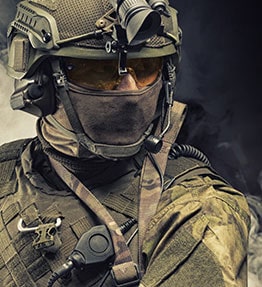Your Guide to Buying Body Armor

When choosing a ballistic, edged blade, and/or spike resistant vest from SafeGuard, you should consider the following:
What Style of Vest?
- Do you want your vest to go under your clothes (and be covert), or be worn over your clothes (and be overt)?
- Do you have any special requirements; for example, do you require the ability to use SAPI plates, or want the vest to open with a front zip
From these answers, you can decide which vest style will suit you best.
What Threats Will You Be Facing?
Assess your threat situation;
- Will it be ballistic only, or is there a threat of attack from spiked or edged weapons?
- What is the highest caliber weapon you will face?
As important as it is to have enough protection, it is also important when choosing a vest that you don't over-estimate the levels of protection you need, especially if you will be wearing the vest for extended periods. Higher-level vests will be slightly heavier than lower-level vests, and will often be slightly stiffer too. Regardless, though, all of our panels are as lightweight and flexible as possible.
What Size Do You Need?
To increase the likelihood that your vest will fit you well, we encourage our customers to provide 3 or 4 of these critical measurements:
- Your overall standing height (this will help us ensure your vest is long enough, and also not too long)
- Include your chest size. You should also match this to our chest size guide.
- Include your sternum length (the distance between the top of the chest bone and the belly button). This specialist measure is the most relevant and should ensure the vest is the best length.
- Finally, female customers should provide their cup size. This information should be entered in the comments box at the checkout. Also include any other information relevant to sizing.
It is important to remember the vest should extend down to your navel (belly button) area. Some people believe body armor should reach the waist; however, this is not the ideal fit.
If a vest goes past the navel, it becomes unnecessarily heavy at the cost of protecting non-vital organs. An over-long vest will also restrict freedom of movement; a vest that extends past the navel will restrict comfort, and affect the ability to even sit or bend down.
Although these considerations may take some time initially, we recommend customers carefully consider these factors before purchasing; they will ensure that you receive the ideal vest for you and your circumstances.
 US
US UK
UK SE
SE NL
NL FR
FR ES
ES DE
DE







